Saturday, December 4, 2021,
North Las Vegas Airport Celebrates Its 80th Anniversary
Airport History Highlights
1941
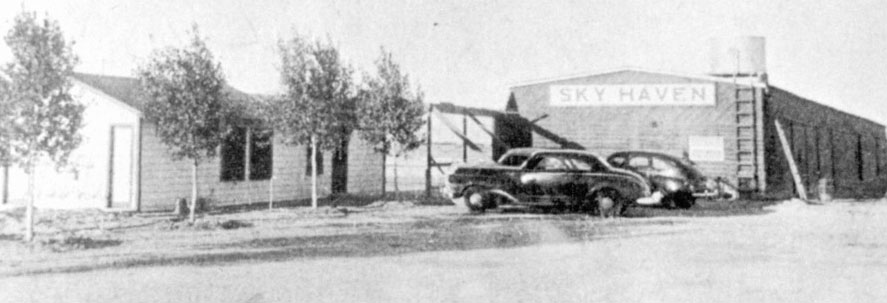
John and Florence Murphy, in association with John "Bud" Barrett, purchased 200 acres near Las Vegas and create the local airport, Sky Haven.
Sky Haven opened on December 7. Some 150 aircraft and several thousand people were present for the dedication festivities. In the midst of the celebration, a pilot brought word of the Pearl Harbor attack from the Las Vegas Army Air Field, stopping the show.
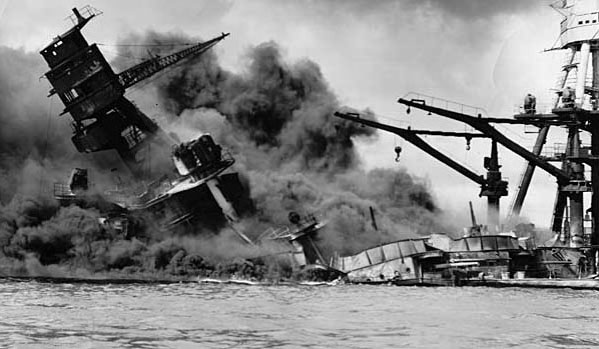
In the midst of the celebration, a pilot brought word of the Pearl Harbor attack from the Las Vegas Army Air Field, stopping the show.
1942
Navy pilots trained at Sky Haven Airport under the Civilian Pilot Training Program.
1943
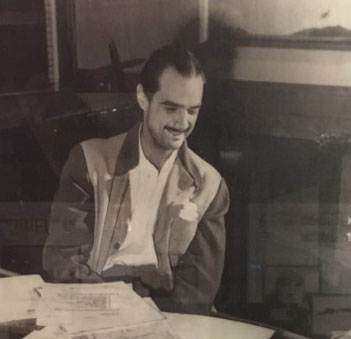
Howard Hughes flew his Sikorsky S-43 to North Las Vegas. The plane was damaged and had to be repaired before testing at Lake Mead.
1946

BonanzAir, which later became Bonanza Airlines, operated with three airplanes out of Sky Haven Airport. Florence Murphy would serve as vice president and secretary treasurer of Bonanza from 1947 to 1958.
1948
Sky Haven was sold to Verald "Bud" Barrett.
1960
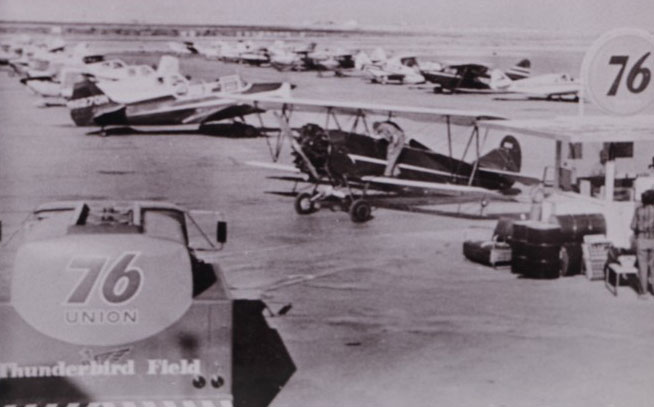
The airport was sold to Wes Durston and renamed Thunderbird Field. That same year, runway paving began, along with the construction of a shade hangar and a combination administration office and restaurant building.
1965
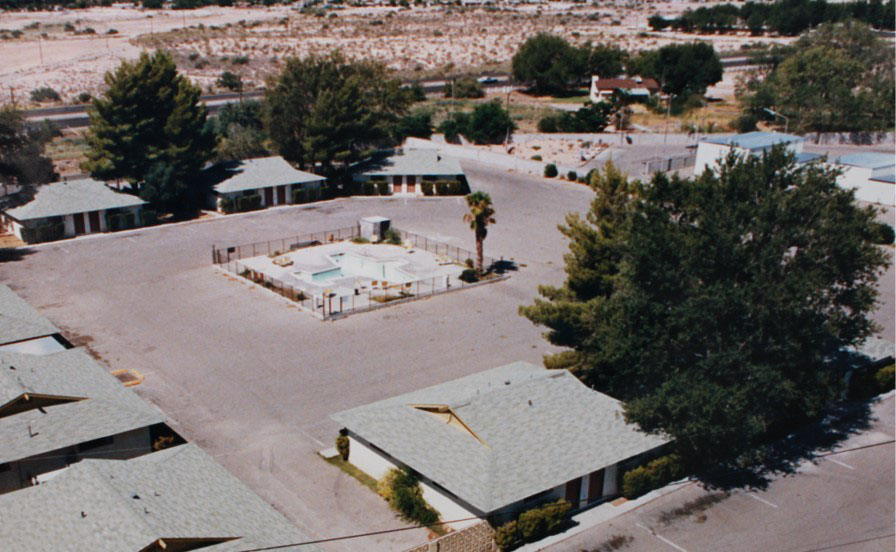
The 40-unit Sky Rider Motel was built. The motel featured an airplane-shaped swimming pool, which was visible from the air.
1966
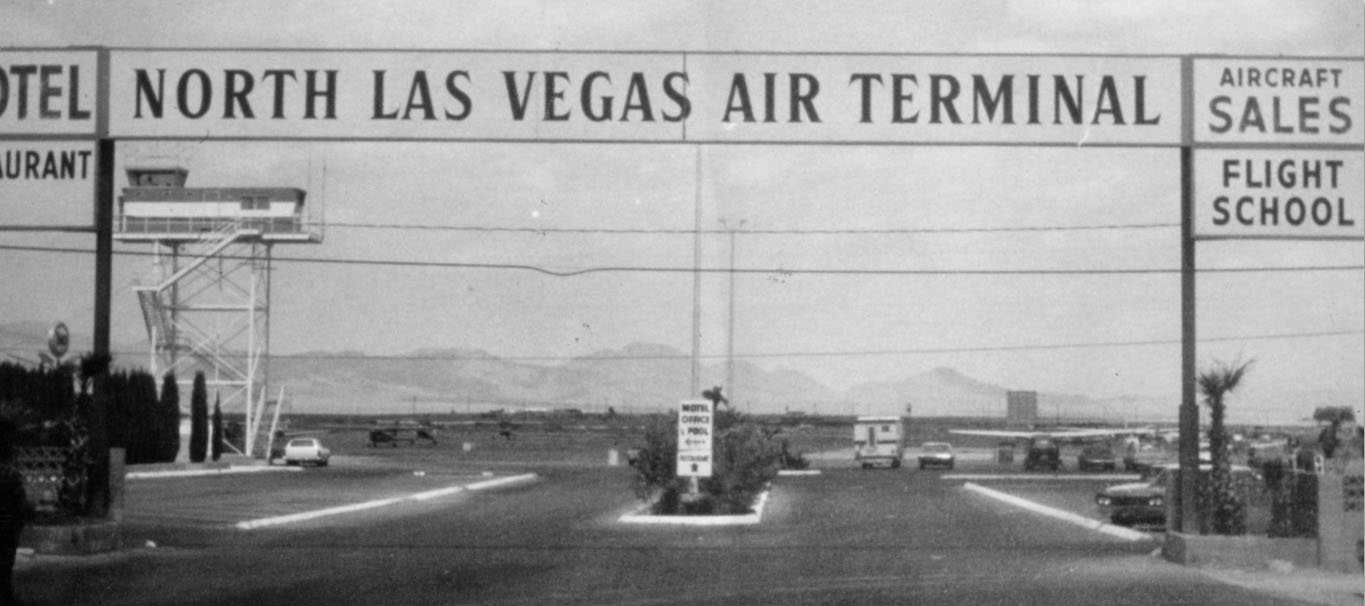
The City of North Las Vegas purchased the airfield's runway and taxiway system. The airfield was later renamed North Las Vegas Air Terminal. It was sold a year later to Howard Hughes.
1974 - 1975
The FAA classified the North Las Vegas Air Terminal as a general aviation reliever airport for Harry Reid International Airport. A portable air traffic control tower (in the photo above, at left) was established in December 1975.
1987
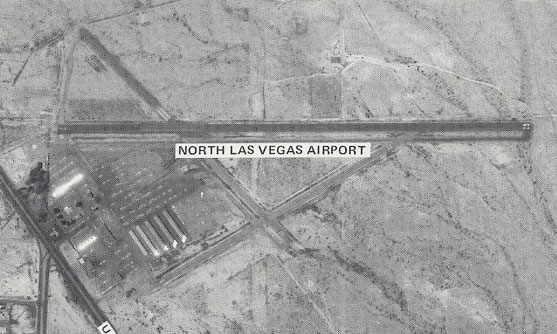
Clark County purchased North Las Vegas Air Terminal for more than $16 million from the Summa Corporation on October 1. Shortly thereafter, the county purchased another $7 million in land around the airport to ensure future compatibility, bringing the total acreage to 823.
1990 - 1991
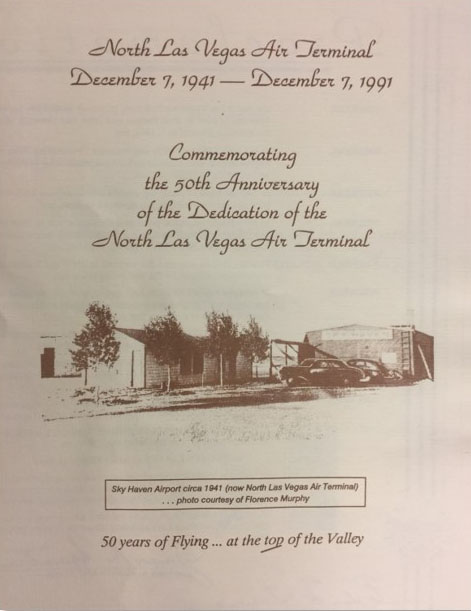
In August 1990, construction began on airfield rehabilitation projects and was completed in October 1991. Runway 12-30 was reopened at an expanded 5,000-foot length and new taxiways Alpha and Bravo opened. December 7, 1991, marked the 50th anniversary of the airfield, as well as the completion of construction projects providing airfield lighting, navigational aids, 20 acres of new ramp and an extensive flood control system.
1992
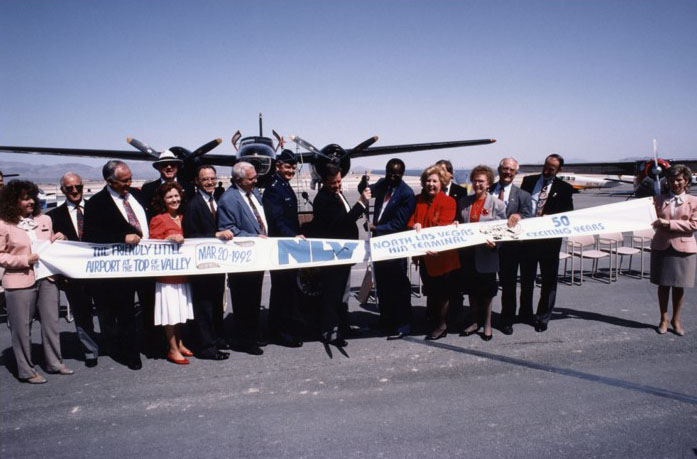
On March 20, the new 15,600 square-foot southwest-style terminal building was dedicated.

It included a pilots' lounge and a restaurant with an outside deck overlooking the airfield.
1994

Construction began on the 5,120-square-foot Agency Air Park building and infrastructure. It consolidated all of the government agencies operating out of North Las Vegas into one area for security and accessibility purposes. Construction was completed in 1995.
1995
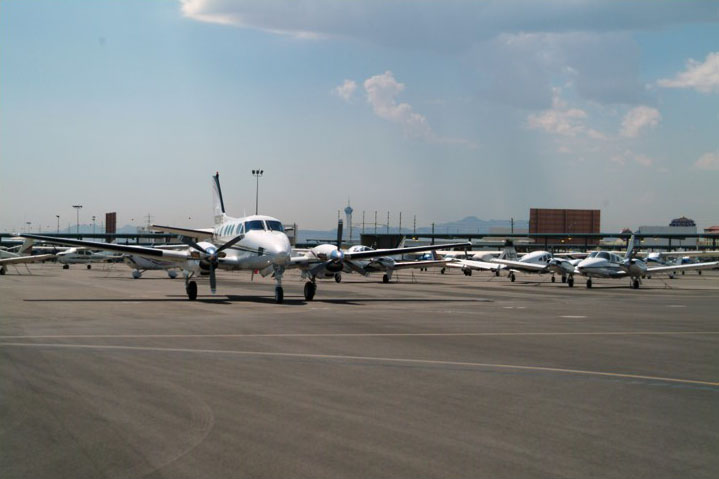
December broke all previous records for the number of aircraft operations, which topped the 216,000 mark.
1998
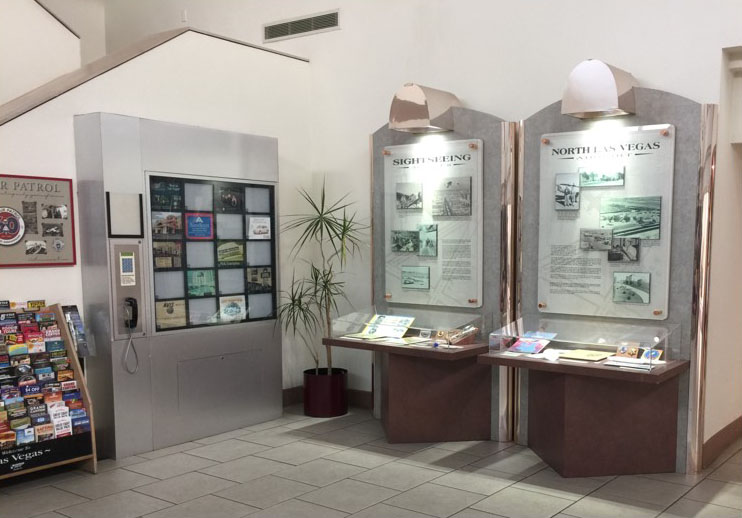
In July, the Howard W. Cannon Aviation Museum satellite exhibit opened in North Las Vegas.
2000
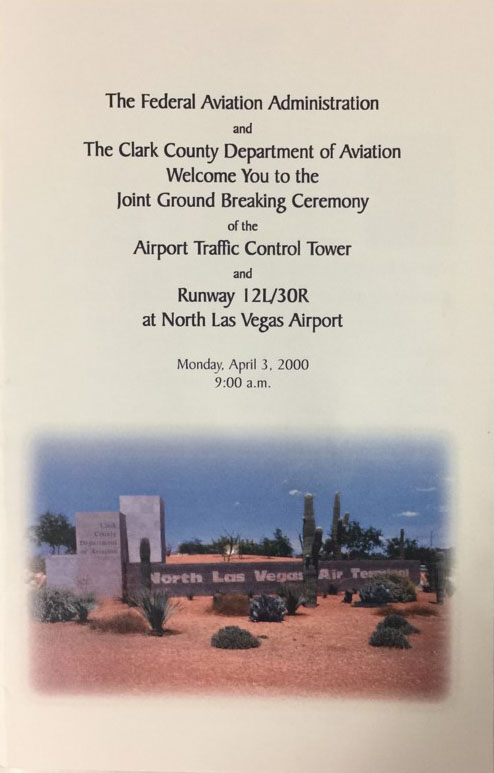
On April 3, the FAA and Clark County Department of Aviation held a joint ceremonial groundbreaking for a new Air Traffic Control Tower and a new runway and taxiway extension. The Air Traffic Control Tower would be the first of its kind, serving as a prototype that set the standard for future medium-activity airport towers.

On August 4, Gus Sabo Memorial Park and aircraft viewing area was dedicated.
2001
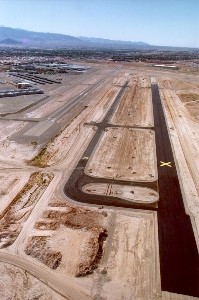
In 2001, Runway 12L/30R, equipped with an Instrument Landing System, was added to provide additional capabilities to the airport including precision lateral and vertical guidance to aircraft approaching and landing on the runway. This enables safe landings during low visibility meteorological conditions, such as low ceilings, fog, or rain. Additionally, it allows student pilots the ability to train on these critical navigation systems.
Also in 2001, a FAA Air Traffic Control Tower was built and began serving pilots with ground-based controllers by directing aircraft on the ground and through controlled airspace. It provides advisory services to aircraft in non-controlled airspace. This enhances safety by preventing collisions, organizing and expediting the flow of air traffic, and providing information and other support to pilots.
2004
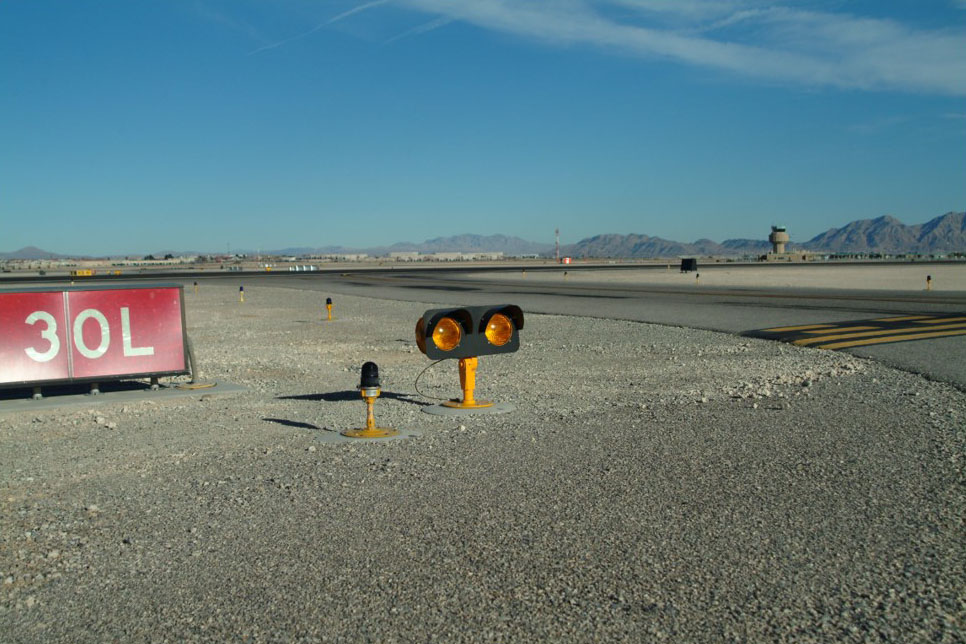
Runway guard lights were installed as part of an FAA project. North Las Vegas Airport was the first general aviation airport in the country to receive elevated guard lights as a means of enhancing safety.
2005
In 2005, navigational aids to the airport were enhanced when Runway End Identifier Lights (REILs) were installed on the ends of Runways 07/24, 12R/30L and 12L/30R.
2007
In 2007, the airport's ability to handle airfield precipitation was improved with the installation of a network of drainage channels that improved airfield drainage and directly tied into the city's flood control system.
2008
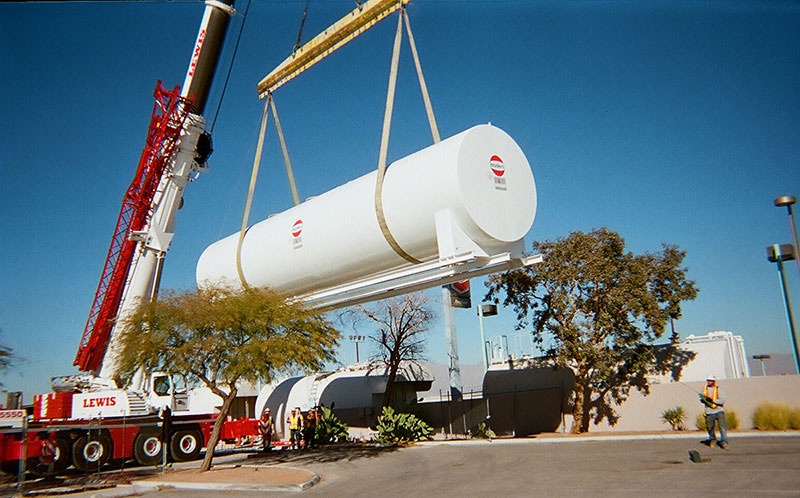
In 2008, VGT's Jet A aircraft fuel capacity was increased by 30,000 gallons by installing an additional large fuel tank, making the airport capable of servicing the increasing number of aircraft using the airport.
2009
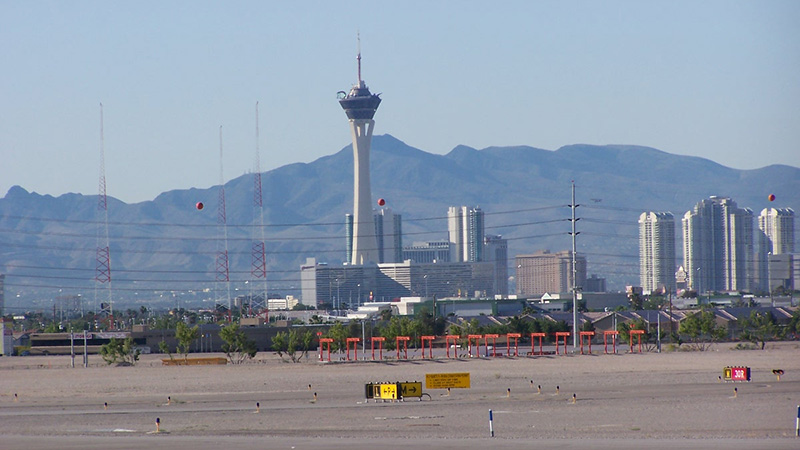
In 2009, safety for arriving and departing aircraft was improved by de-energizing above-ground high-tension power lines and dismantling the 100-foot towers in favor of new underground lines. These towers and power lines created a potential obstacle for aircraft taking off and landing on two of the airport's busiest runways.
2010
In 2010, the Las Vegas Metropolitan Police Department constructed a modern hangar and facility to support critical Search and Rescue operations that operate from the airport.
Also in 2010, state-of-the-art Environmental Protection Agency certified facilities were installed to enable the airport sweeper to cover large areas of the airport without the need to service the vehicles off-site, reducing foreign object debris. This system enables the airport to safely dispose of containment surface material while protecting the water system.
2011
In 2011, Drainage channels near the runways were redesigned using box culverts to eliminate the potential of hard stop hazards for aircraft.
2013
In 2013, the navigation of taxiways Alpha, Golf & Foxtrot was improved to provide pilots with simplified guidance on the airfield in areas that had caused confusion in the past.
2015
In 2015, North Las Vegas Airport conducted a Wildlife Hazard Assessment. Wildlife Hazard Assessments help identify and minimize risks of aircraft-wildlife collisions and in turn save lives -- of both humans and animals -- as well as repair costs and damaged aircraft downtime. A Wildlife Hazard Management Plan (WHMP) was developed in cooperation with Airport Wildlife Consultants. The WHMP outlines habitat management techniques on and around the airport that reduces or eliminates the area's attractiveness to wildlife.
2016
On December 7, 2016, North Las Vegas Airport celebrated its 75th Anniversary. North Las Vegas Airport was created by aviation enthusiasts Verald "Bud" Barrett and J.M. and Florence Murphy, who opened the airfield as Sky Haven Airport on December 7, 1941. The opening celebration then was interrupted by news of the air raid at Pearl Harbor, and a scheduled flying demonstration was canceled. On December 10, 2016, North Las Vegas Airport celebrated by welcoming aviation enthusiasts to an open house event.
2017
The Clark County Department of Aviation, owner and operator of North Las Vegas Airport (VGT), engaged a team of consultants to prepare a Runway Incursion Mitigation (RIM) Analysis Study for the airport. The study comprehensively reviewed opportunities to reduce the potential for a runway incursion, meet current Federal Aviation Administration (FAA) design standards and plan for future airfield needs. The project will conclude early 2020.
2019
In 2019 an extensive remodel of the North Las Vegas Airport main terminal was completed. To reflect the dynamic community that it serves, the Clark County Department of Aviation invested $1.8 million in the renovations. A new contemporary ceiling, sparkling terrazzo flooring, stainless steel column surrounds, upgraded FBO areas and restrooms, and a new color palette give the building an updated, modern look and feel. Custom artwork on the walls at the north main entrance and in the Grand Canyon Room enhances the modern look while showcasing the importance of the airport in the local aviation community. The designs consist of overlaying lines depicting runway configurations, flight arrival and departure tracks, helicopter tour paths, and the airspace surrounding the airport. This investment provided North Las Vegas Airport the opportunity to qualify for membership in the Air Elite Network.
In May 2019, North Las Vegas Airport became an Air Elite® member by meeting strict criteria for facility and service standards. Air Elite® is a network built to elevate FBO service and facility standards to the level of the legendary diamond standard in hospitality. Each Air Elite® FBO is a member of the World Fuel Services Network. By investing in the remodel of the terminal building and ensuring the highest level of customer service and safety training for our employees, North Las Vegas Airport is able to offer quality services in an upscale facility that aligns with our Air Elite motto: Airport Professionals serving Aviation Professionals. We maintain these standards continuously and will undergo thorough annual quality assurance audits and facility checks.
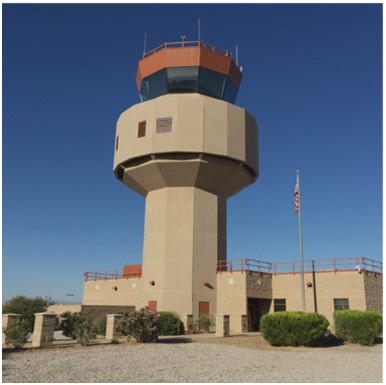
Did You Know …
VGT is 171,684 total operations in 2020 making it the 49th busiest airport in the United States.
The primary mission of North Las Vegas Airport (VGT) is to increase airspace capacity for commercial airlines and to reduce congestion by attracting as many small general aviation aircraft as possible from Harry Reid International Airport.
The airport encompasses 911 acres, more than LaGuardia in New York, Midway in Chicago and Reagan National in Washington D.C.
Twenty-nine commercial businesses operate at the airport, including flight schools, aircraft maintenance facilities, office and hangar rental companies, charter operators, a restaurant and Grand Canyon sightseeing airlines.
North Las Vegas Airport hosts community support services including: a senior Civil Air Patrol squadron; air ambulance flights to transport critically ill patients; Las Vegas Metropolitan Police Department Search & Rescue; Bureau of Land Management; and television stations to broadcast traffic reports for local drivers.
Capital improvement projects for the next year include a terminal interior remodel.
North Las Vegas Airport Managers
1987-Present
- Tom Schmidt: 1987
- Pat Sheahan: 1988
- Ron Shoemaker: 1989
- Malon Harris: 1990-1991
- Duane Busch: 1992-1994
- Tom Donaldson: 1995-1996
- Gus Sabo: 1996-1998
- Duane Busch: 1998-2003
- Doug McNeeley: 2004-2008
- Ben Czyzewski: 2009-2015
- Kelly Burns: 2015-2018
- Karina Tarnowska: 2018-2022